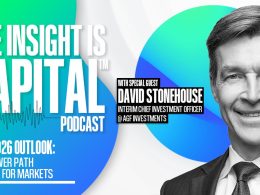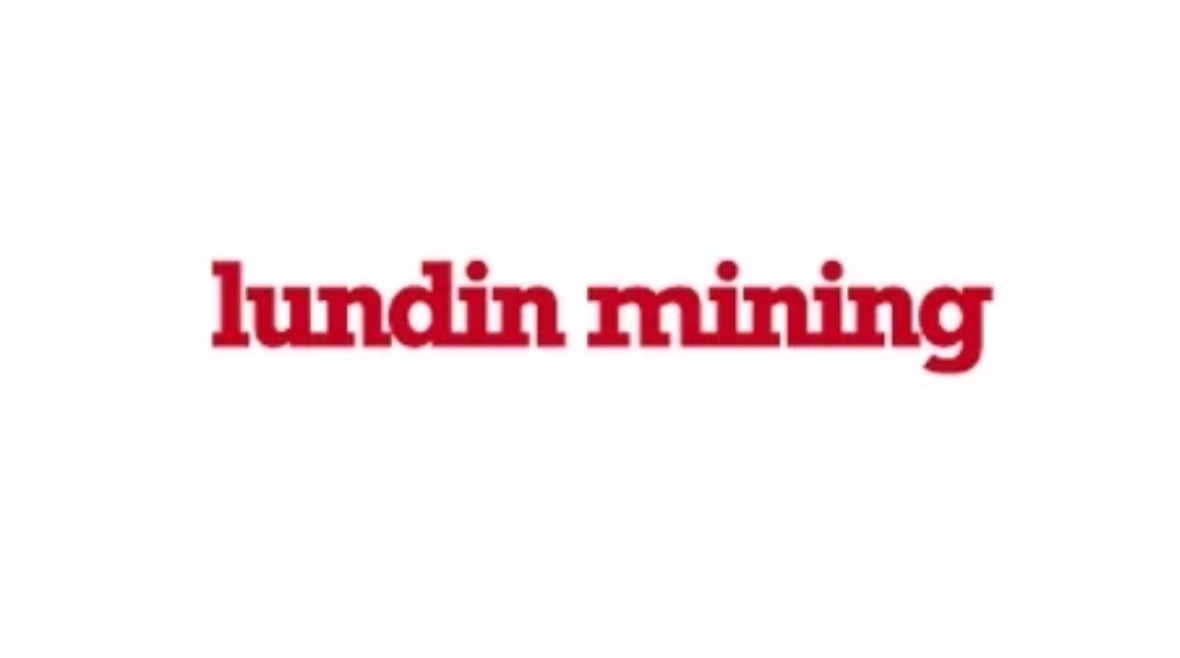by Marcus Weyerer, CFA, Director of ETF Investment Strategy EMEA, Franklin Templeton ETFs
Executive summary:
- US equities are now in their fourth year of a powerful bull market, up more than 80% since 2022.
- Resilient earnings growth and a mixed-but-still-benign macro backdrop continue to support risk assets.
- We see continued strength in mega caps and favor an active approach to small- and mid-capitalization (cap) exposure as a source of diversification amid emerging opportunities.
- We believe comparisons to the 1990s internet bubble are misplaced—if anything, history suggests the current cycle still has room to run.
A bull turns three
In nature, depending on the breed, a bull’s lifespan can extend well beyond a decade. Bulls typically reach puberty by around nine months and attain full strength—their physical peak—between three and four years of age. They then spend several years in their prime, often remaining dominant past the age of six or seven.
Meanwhile, US equities have now entered their fourth year of a record-breaking bull market. Since bottoming on October 12, 2022, the S&P 500 Net Total Return (NTR) Index has surged more than 80% and set more than 200 new all-time highs.1 The rally has also been remarkably stable: The index has recently logged the third-longest streak in over two decades without a single-day loss of 3% or more.2 Drawdowns have been limited, with only two corrections exceeding 10% during this period. The sharpest pullback came after the tariff announcements in April, when equities briefly flirted with a bear market—down 18.7% from their peak—before rebounding at exceptional speed.3
We believe that while ambitious valuations and stretched technical market conditions call for continued diversification, the broader backdrop for US equities remains highly constructive. Investors may consider looking beyond traditional exposures to capture any remaining upside.
Fundamental corporate strength masks an ambiguous macro picture
New tariff-induced volatility may point to a more cautious environment over the short term. However, solid fundamentals in the US equity market continue to underpin recent highs. US real gross domestic product (GDP) is forecast to grow steadily into the end of 2026.4 The consumer price index broadly continues to trend lower, despite some recent spikes.5 At this stage, we don’t view visible cracks in the labor market to be bearish signals. On the contrary, the ambiguous top-down picture drives the markets’ Federal Reserve (Fed) interest-rate cut optimism, which in turn may help justify elevated valuations.
Meanwhile, from a bottom-up, corporate level, US companies have shown impressive earnings growth. Nearly 70% of firms delivered positive earnings surprises for the second quarter of this year, in line with historical averages.6 Strength in earnings is also expected to continue, with earnings-per-share growth of 11.9% expected for 2025, and 13.2% for 2026.7 For the upcoming third quarter earnings season, consensus expectations have risen unusually since the end of June—reversing a typical pattern where analyst forecasts often start out higher and are revised lower ahead of actual results.
The case for mega caps
Diving deeper into the recent rally, mega-cap stocks are fueling market momentum. While market breadth has cyclically recovered as of October 2025, the long-term trajectory toward narrower leadership remains intact. The correlation between daily S&P 500 returns and “net advancers”—the number of stocks up minus the number of stocks down on any given day—has been decreasing for at least a decade.8
Exhibit 1: S&P 500’s Breadth Bounce Appears Cyclical, Not Structural

The blue line represents the Spearman rank correlation coefficient between daily S&P 500 returns and net advances (number of stocks up minus number of stocks down), calculated over 252 trading days. Spearman rank correlation is a non-parametric measure of correlation used for variables in data sets lacking normal distribution or linear relationships; the correlation is calculated by ranking the variables.
Source: Bloomberg, as of October 13, 2025. Analysis by Franklin Templeton ETF Strategy. Past performance is not an indicator or a guarantee of future performance. Indexes are unmanaged and one cannot invest directly in an index. Important data provider notices and terms available at www.franklintempletondatasources.com.
Narrow leadership isn’t necessarily a flaw in our view. It’s increasingly structural, anchored in innovation and the urgent need for scale (as exemplified by recent high-profile deals in the technology space worth hundreds of billions of dollars). In other words, highly concentrated markets during rallies are not a bug—they are a feature, in our view.
Mega caps have also proven resilient to market corrections compared to the S&P 500. While the largest names offer a distinct risk-on profile, their drawdowns are usually in line with, and sometimes lower than, those of the broad market. At the same time, they reliably rally harder during uptrends. Over the past 10 years, the Solactive US Mega Cap 100 Select Index NTR exhibits a rally-capture ratio of 1.07 versus the S&P 500, and a drawdown capture ratio of 1.01.9
Exhibit 2: S&P 500 and Mega 100: Rallies and Corrections (USD, in %)

Sources: Bloomberg, as of October 13, 2025. The S&P 500 NTR Index represents the performance of the S&P 500 Index, including both stock price changes and reinvested dividends after a tax withholding has been applied. The Solactive US Mega Cap 100 Select Index NTR tracks the performance of the 100 largest companies from the US stock market, selected from the Solactive GBS United States 500 Index, after excluding companies with verified ongoing involvement in controversial weapons. Past performance is not an indicator or a guarantee of future performance. Indexes are unmanaged and one cannot invest directly in an index. Important data provider notices and terms available at www.franklintempletondatasources.com
A tale of two rallies: lessons from the 1990s
There is no denying that markets appear somewhat stretched at this point, but we believe ambitious valuations following a strong rally are not in themselves a sell signal. While talk of bubble risks is understandable, we feel it remains premature. Historical precedents abound, but one frequently—and, in our view, incorrectly—invoked comparison is the dot-com bubble. Many of that era’s most hyped companies lacked both profitability and cash flow, in stark contrast to many of today’s dominant firms in the artificial intelligence (AI) ecosystem. Some late-1990s players did enjoy monopoly-like positions, but their advantages were largely hardware-based and easily commoditized. This led to rapid margin erosion and intensifying competition even as the total addressable market expanded with internet adoption. By contrast, today’s leaders often operate within systemic rather than layer-specific monopolies, which may help preserve their pricing power—and margins—for considerably longer.
We also believe the timelines in the above comparison are mismatched. To be clear, the mid- to late-1990s bear notable similarities to the 2020s. In 1994, for example, much like in 2022, the Fed embarked on an aggressive rate-hiking cycle that triggered a spike in equity volatility. Both years saw fixed income markets reeling—1994 is, in fact, remembered as the year of the “Great Bond Massacre.” The release of the Netscape browser in December 1994 is widely regarded as the “big bang” that mainstreamed the internet, while 2022 marked the beginning of AI’s mass adoption with the arrival of ChatGPT.
Exhibit 3: Trough to Peak: The Dot-Com Bubble Burst in 2000—More Than Five Years After the Release of Netscape

Source: Bloomberg, October 2025 and Franklin Templeton EMEA ETF Investment Strategy. Day 0 represents the respective market low in the year 1994 and 2022. All data based on the S&P 500 Index.[JM1] Indexes are unmanaged and one cannot directly invest in them. They do not include fees, expenses or sales charges. Past performance is not an indicator or a guarantee of future results. Specific securities mentioned are for illustrative purposes and not investment recommendations or discussions about any current FT holdings.
As a thought experiment—and with all due caveats—taking 1994 and 2022 as base years allows for a comparison of both cycles by rally duration and intensity. Three years after the market low in 1994 (on April 4), the S&P 500 had rallied 80%. By October 2025, three years after the 2022 trough, the market was up 82%—an eerily similar trajectory. From 1997, the index continued to climb for another three years before peaking on March 24, 2000—248% above the 1994 low.10
In blunt terms, if AI is the new internet, then ChatGPT is its Netscape moment.11 Markets soared for more than five years after Netscape’s release; we are now not yet three years removed from ChatGPT’s debut. To that end, we believe 2025 is more likely to resemble 1997 than 1999 or 2000, and that markets still have plenty of runway. At this stage, we continue to view modest corrections—or “breathers”—as buying opportunities rather than causes for concern.
True bear markets—such as those in 2008, 2020 or 2022—are typically triggered by exogenous shocks, not by markets that merely “feel” hot or trade on extended valuations.12
The case for small- and mid-caps
All this is not to say investors should follow large-cap momentum blindly. We believe there to be an increasing case for small- and mid-cap stocks when a selective strategy is applied. While overshadowed by gains at the top of the market, the Russell 2000 Index has in fact kept pace with the S&P 500 since the early 2000s—reflecting underlying corporate strength beyond the top brass. Small- and mid-caps could be poised for their time in the sun. Industrials make up the largest sector in the Russell 2000 Index at 18.9% compared to 8.7% in the S&P 500 and may benefit disproportionately as the effects of new Trump administration policies take hold.13 A focus on domestic production, supported by targeted tax incentives, is creating a favorable environment for the US industrial sector. In addition, tariff-related disruption may cause a headache for several sectors, but manufacturing output is expected to expand by 2.1% over the long-run.14 Taken together, we believe current macro conditions present a genuine growth opportunity for smaller US market-cap segments.
Exhibit 4: Opportunity Lies Beyond the Large Caps, But Careful Selection Is Needed
Performance and Standard Deviation of Index Constituents

Source: Bloomberg, as of October 14, 2025. The Russell 2000 Index is a small-cap US stock market index that makes up the smallest 2,000 stocks in the Russell Index. Past performance is not an indicator or a guarantee of future performance. Indexes are unmanaged and one cannot invest directly in an index. Important data provider notices and terms available at www.franklintempletondatasources.com.
With this in mind, the chart above illustrates why a selective approach is essential when investing in small- and mid-cap stocks. The concentrated blue points represent the S&P 500, with each holding’s standard deviation plotted against its three-year annualized return. By contrast, the Russell 2000 Index displays a far wider dispersion of outcomes. The opportunity set is far broader than what the S&P 500’s narrow leadership offers, but many smaller stocks have delivered weak risk-adjusted returns. With greater dispersion comes a stronger case for active management: careful selection can help investors uncover opportunities far beyond traditional market-cap-weighted indexes.
Being too cautious is often the biggest risk
Investors are understandably wary of record-breaking statistics, successive all-time highs, ambitious valuations and elevated political uncertainty. Yet while markets have continued to charge higher, many anticipated risks have failed to materialize. We take a clear stance: being too cautious is often the biggest risk. Opportunities exist both in underrepresented mid- and small-cap US equities and in the continued momentum of mega-cap leaders. Importantly, we do not believe US equities have reached their peak—historical patterns, resilient earnings growth and ambiguous-but-still-benign macro conditions all suggest that markets retain plenty of runway before a true cyclical top. To fully capture the fundamental strength of US equities, investors should look beyond traditional allocations.
Endnotes
- Source: Bloomberg, October 2025. The S&P 500 NTR Index represents the performance of the S&P 500 Index, including both stock price changes and reinvested dividends after a tax withholding has been applied. Past performance is not an indicator or a guarantee of future performance. Indexes are unmanaged and one cannot invest directly in an index. Important data provider notices and terms available at www.franklintempletondatasources.com.
- Source: Bloomberg, October 2025.
- Source: Bloomberg, October 2025. Analysis by Franklin Templeton Institute and EMEA ETF Investment Strategy.
- Source: Bloomberg Consensus, August 2025.
- Sources: FactSet, US Department of Labor, August 2025.
- Source: Bloomberg, as of September 11, 2025.
- Sources: Bloomberg, MSCI, August 2025. There is no assurance that any estimate, forecast or projection will be realized.
- Source: Analysis by Franklin Templeton and EMEA ETF Investment Strategy, October 2025.
- Source: Bloomberg, October 2025. The Solactive US Mega Cap 100 Select Index NTR tracks the performance of the 100 largest companies from the US stock market, selected from the Solactive GBS United States 500 Index, after excluding companies with verified ongoing involvement in controversial weapons. Past performance is not an indicator or a guarantee of future performance. Indexes are unmanaged and one cannot invest directly in an index. Important data provider notices and terms available at www.franklintempletondatasources.com.
- Source: Bloomberg, October 2025.
- Specific securities mentioned are for illustrative purposes and not investment recommendations or discussions about any current FT holdings.
- Source: Analysis by Franklin Templeton and EMEA ETF Investment Strategy, October 2025.
- Source: Bloomberg, October 2025. The Russell 2000 Index is a small-cap US stock market index that makes up the smallest 2,000 stocks in the Russell Index.
- Source: “State of U.S. Tariffs.” The Budget Lab at Yale. August 7, 2025.
What are the risks?
All investments involve risks, including possible loss of principal.
Equity securities are subject to price fluctuation and possible loss of principal. Small- and mid-cap stocks involve greater risks and volatility than large-cap stocks. Large-capitalization companies may fall out of favor with investors based on market and economic conditions.
Diversification does not guarantee a profit or protect against a loss.
ETFs trade like stocks, fluctuate in market value and may trade above or below the ETF’s net asset value. Brokerage commissions and ETF expenses will reduce returns. ETF shares may be bought or sold throughout the day at their market price on the exchange on which they are listed. However, there can be no guarantee that an active trading market for ETF shares will be developed or maintained or that their listing will continue or remain unchanged. While the shares of ETFs are tradable on secondary markets, they may not readily trade in all market conditions and may trade at significant discounts in periods of market stress.
Any companies and/or case studies referenced herein are used solely for illustrative purposes; any investment may or may not be currently held by any portfolio advised by Franklin Templeton. The information provided is not a recommendation or individual investment advice for any particular security, strategy, or investment product and is not an indication of the trading intent of any Franklin Templeton managed portfolio.
WF: 7189668
Copyright © Franklin Templeton ETFs















